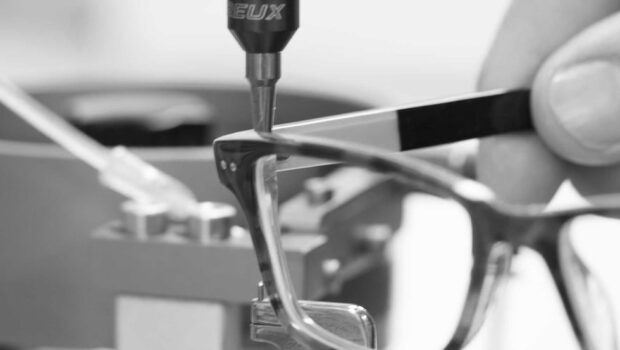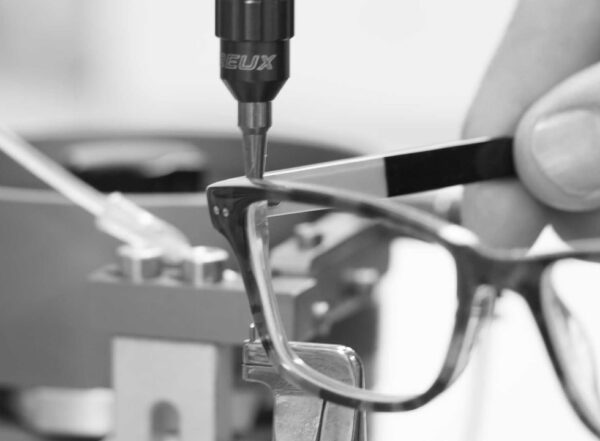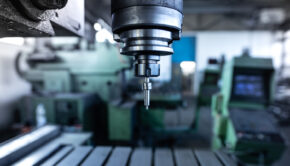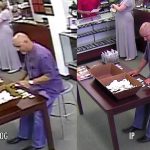How are spectacle frames manufactured?
Although contact lenses and laser surgery are prominent in the field of vision correction, many will discover the essential or desirable lenses for their own needs. Improved technology in the production of lenses and frames has made eyepieces easier to wear. The fashion industry supports glass frames actively as an additional way to expressive designs and a popular way of conveying personal styles. An example of this is the world class spectacles provided by the Ray ban sunglasses. Here, in this article, we will have a look at the complete process of frame manufacturing.
Process of making Spectacles Frames
- A steel die is inserted in a machine that punches blanks from cellulose-acetate sheets. The steel die edges are sharp and the steel bars are used to remove the stunted fronts on which the lenses are mounted. In the bleach room, the acetate sheets are heated to approximately 180 ° F (68 ° C). The flexible sheets are mounted on a blank and the die cuts through the plastic to produce a blank under many tonnes of pressure. The machine is automatically moved to the next part of plastic to lift the die. While the plastic is soft, the blanks are made fast. The blanks are then removed from the sheet and the sections of the lens are removed from the frames.
- In a number of procedures, the blank frame fronts are finalised. Rods are cut with a router to hold the lenses. An aluminium holding fastener consisting of two sections hold the frame tightly. The attachment is attached to the framework and pressed against the blade of the router. The grooves, which is industry standard are cut with about 0.16 in (0.41 cm) width. If thick lenses are required, they will fit the routing grooves along the edges.
- Then the frames are smoothed, and two abrasive machines eliminate raw edges. One machine is specifically designed to lighten the eye-like edge of the frame, and another to smooth the nose area. The frames are then attached with the nose pads or attachments holding the nasal pads. The bandages are also smoothed once the glue has been allowed to set for 24 hours.
- Depending on the frame type, the temples may be flat with angular borders or rounded. The temples and small band of steel known as the core wire are heated. If the correct temperatures are reached, the centre of the softened temple is connected via a core wire. Inexpensive glasses may be fabricated without core lines, like certain non-prescription lenses, but they are also less robust.
Temples are the two side arms which curl over the ears. The temples are punched using blanking dies from sheets of acetate. The conventional temple length is 5-6 inches (12.7-15.2 cm) and is frequently made from the same material or substance. The temples are fastened to the frames with a metal hinge after the frames are sanded. Plastic temple strips are warmed and heated to build the temples. If the correct temperatures are reached, the centre of the softened temple is connected via a core wire.
- Small panels are carved in the upper comers of the frame to attach temples to the frames. Each slot is fitted with half a metal hinge, and the frame as well as partial hinges are put in a Capitron machine. The Capitron induces ultrasonic vibration in the metal hinges and produces frozen heat. This friction causes the plastic of the framework to melt locally around the hook so that the hook is connected to the frame. This is safer than glue or other kinds of bonding.
- The fronts are then marked with the name or logo of the maker, the name of the design of the frame, and the frame size. Before the temples are linked to the frame, the front frame is tilt in from top to bottom to the side of the wearer. The precise angles of the upper edges of front can be cut using an automatic saw. The caps are mounted over the articulations and the front is polished. The fronts are still flat by this point with sharp borders except where the lenses slot on the router.
- The smooth fronts must now be shaped in order to meet the facial curvature. They are heated up in an oven in a curved die (like a bleach die used to manufacture fronts) and are placed in a press. They are placed in an oven. Pressure is used to establish a consistent curve at the front for around 30 seconds. In a cold water bath, the warm front is dipped to so that it maintains the curved form.
- In order to add the finished pane, the shaped fronts are returned to the polishing room where they pass through a succession of rolling drums for four days. These drum includes a fine pumice and the last drum contains wax polishing. For any scratches, all polished fronts are meticulously inspected. They are individually placed based on sizes, style and colour in the envelopes.
Design
Manufacturers of eye spectacles may keep their own design staff, or may employ external design consultants. There are different trends in eyewear, including light or dark, thick or thin frames, and ornate forms or styles. Specialized frames are also made to style the toddlers and half-frames for reading glasses. Designs include many bridge size and eye size criteria. The bridge size enables various thicknesses of the nose in the upper half.
For the correct lens diameters range, three eye sizes are standard. Each style is usually produced in four distinct colours, therefore a single style results in 12 colour and size options. Frame designers and manufacturers usually make a new style every couple of months.
Raw Materials
Eyeglass frames are usually made of metal or a kind of plastic known as cellulose acetate. The cotton-derived cellulose acetate is both flexible and robust. It is manufactured in long, somewhat broader narrow sheets. The sheets have a length of up to 3 feet and a width of 0.33 in (0.84 cm).
The above is the complete process of Frame Manufacturing. Big spectacles companies like Ray ban sunglasses use the same process to make the frames of the spectacles.

















